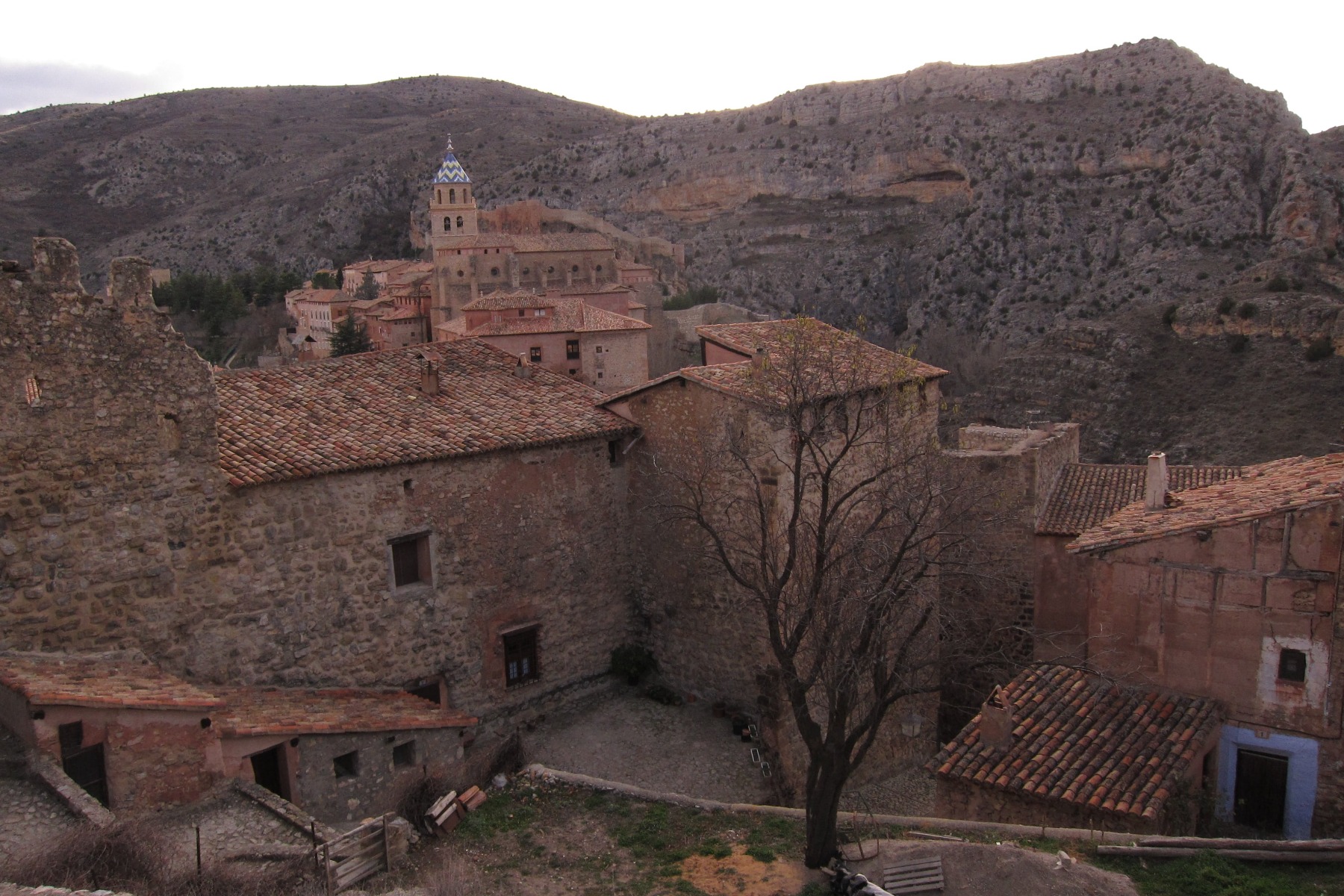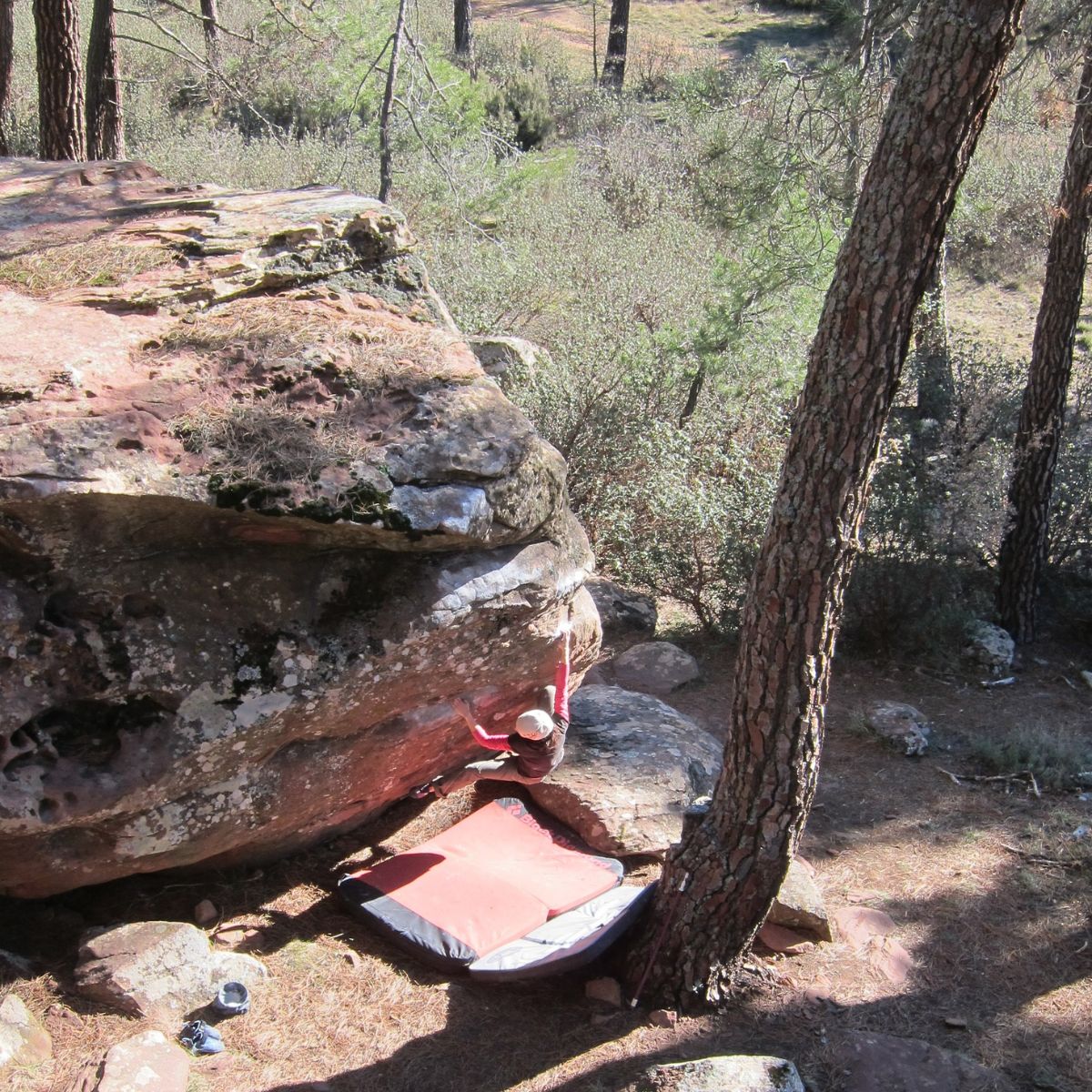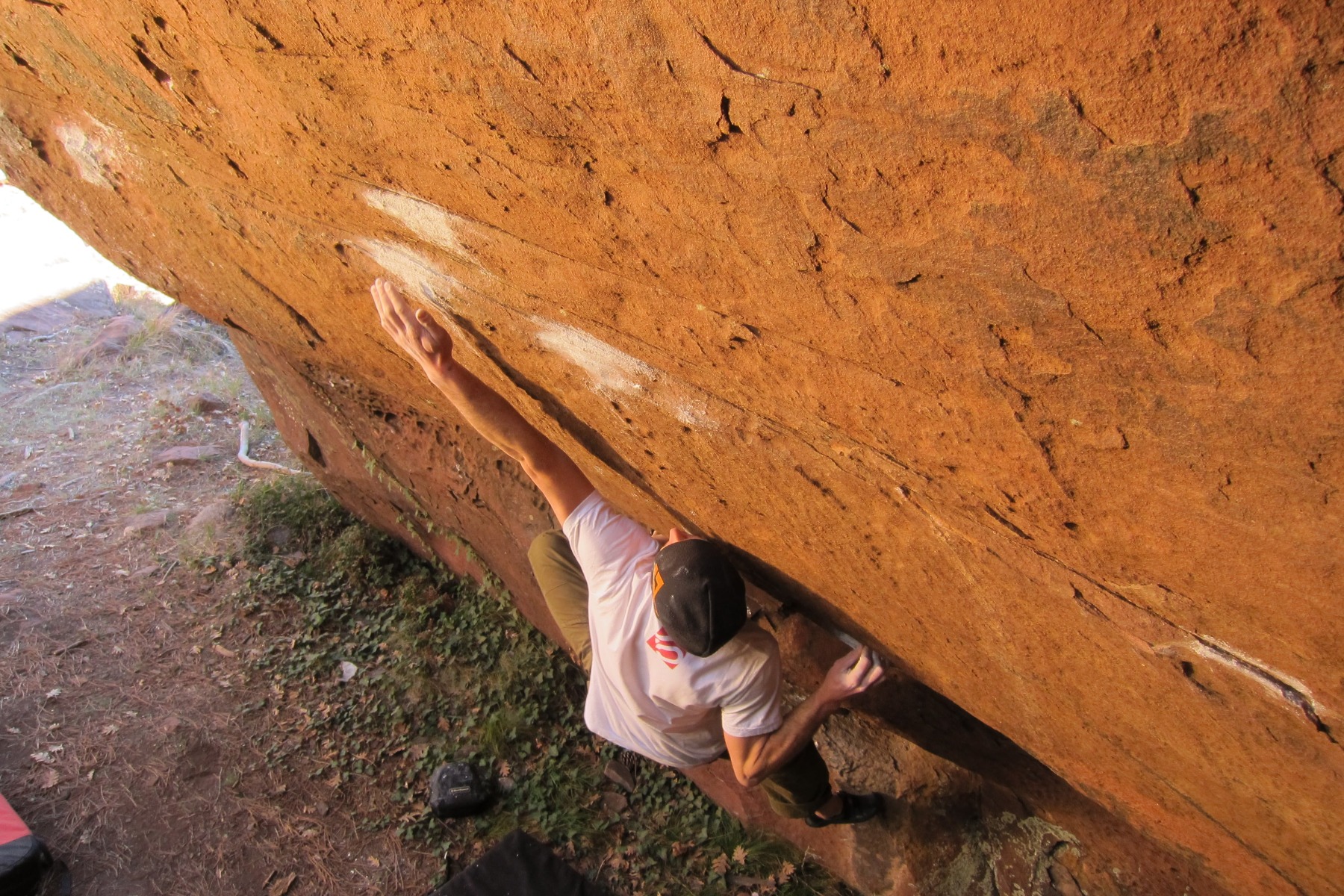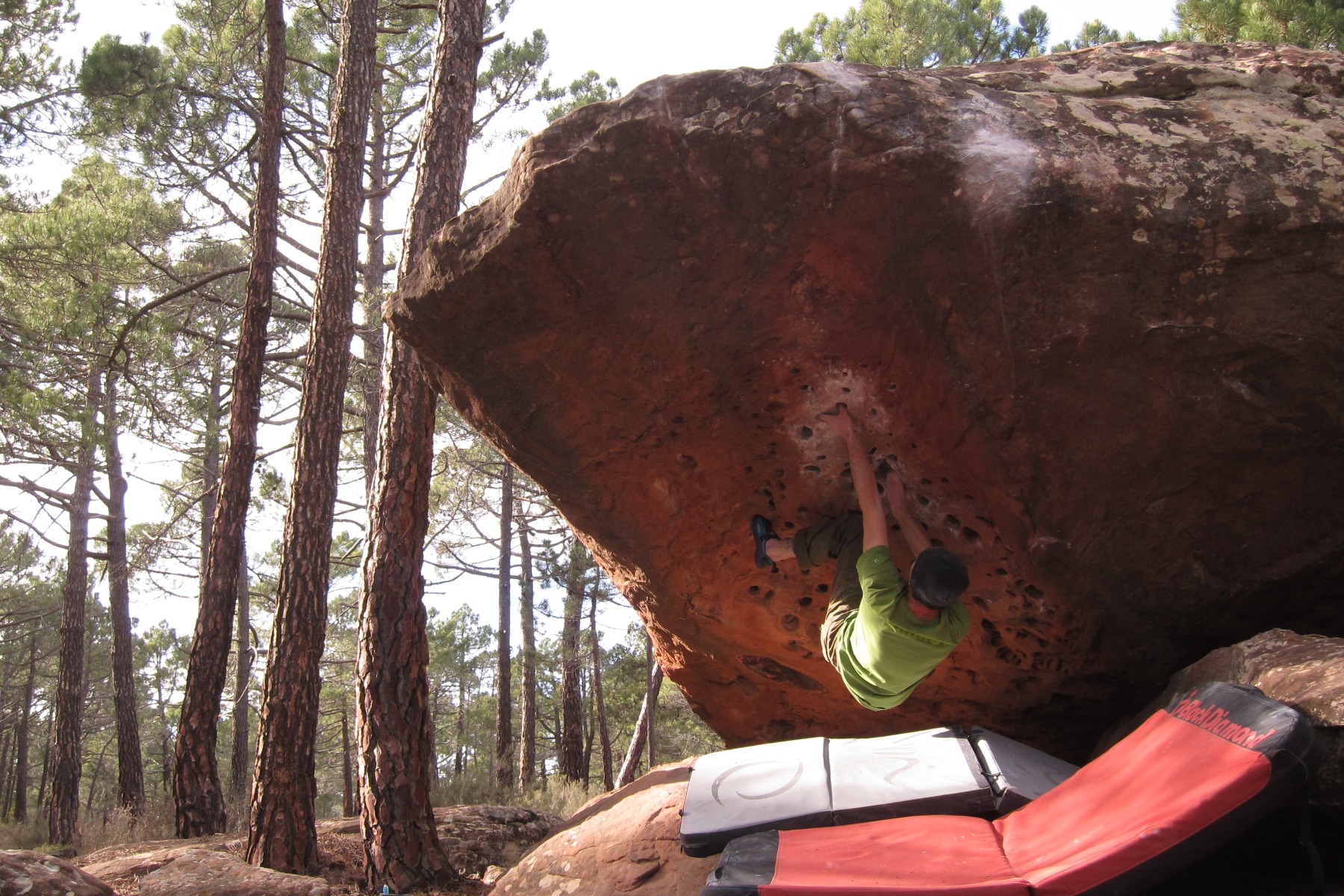Boulders of red sandstone as far as the eye can see, a pine forest immersed in a silent valley, lines that require a dynamic and creative climbing style full of jumps, dynos, and slaps on slopers: we are talking about Albarracin, the largest bouldering area in Spain.
Located on the outskirts of Teruel, not too far from Valencia, but also within a reasonable distance from Madrid, Albarracin represents the ultimate destination for any boulderer looking for excellent rock climbing and a magnificent natural setting.
We are, in fact, in the protected natural area "Paisaje Protegido de los Pinares de Rodeno," an area strictly regulated by the Department of the Middle Environment to protect its preservation. On the site Montana Regulada (https://montanaregulada.org/area/albarracin-pinares-rodeno), you can find all the latest regulations about climbing in this area, including the list of sectors closed permanently, the list of areas with restricted access, and rules about parking and overnight stays (spoiler: you cannot sleep in the parking lot).

View of the center of Albarracín
When to climb in Albarracin
For many European boulderers, it is the almost "obligatory" choice for the Christmas holiday period: trusting in sunny days and the absence of wind, you can hope to climb in a t-shirt even on New Year’s Eve, obviously reserving all your energy for super intense sessions in the middle of the day. Although during the "canonical" holiday period, it may be challenging to find accommodation if you have not booked in time, it is in the middle seasons that climbing in Albarracin is particularly pleasant, both in terms of conditions and the length of the days. If you are lucky enough to be able to go to Albarracin in autumn or spring, you can definitely take advantage of the highest temperatures, long days, and a cool breeze carrying grip.
Sectors and Virtual Map of Albarracin
The sectors of Albarracin listed in the guide are fifteen, totaling 1600 problems: we have selected five of the most classic and frequented, and therefore, they are most affected by the high number of climbers during various periods of the year. We are confident that with the utmost attention from all climbers, these sectors will not have to undergo partial or total restrictions, such as those applied to certain areas within Albarracin, aimed at better protecting the natural and historical heritage.

Parking
It's the first area you can't avoid when you head from the main car park to the obvious boulders that are a few meters away, without even having to cross the road. This sector contains about twenty blocks suitable for all levels, including ideal boulders for warming up, such as Mouse Park, and boulders that will challenge even high-level climbers, such as Zarzamora.
Parking welcomes you with a synthesis of everything you can find in the different sectors of Albarracin: overhangs crossed by cracks of different depths, plates finely enriched by tiny notches make it possible to cling even where there seems to be nothing to squeeze, and more vertical walls with re-establishments on flares. Although it is not a vast sector like Arrastraderos, climbing here is particularly varied: already on the Tortuga boulder, for example, you can find lines from 6A to 7C, with the beautiful passage of 6B+ that gives name to the whole boulder and that absolutely deserves to be climbed.
Parking is the typical area frequented by families with children, partly due to its short approach, or by climbers who want to acquaint themselves with the dynamic style of bouldering in Albarracin, perhaps spending a couple of hours here before heading towards the other areas of the pine forest. It is also ideal for situations where time is limited or when the weather is uncertain, and you prefer to stay "within driving distance."
Arrastradero
Arrastradero is the classic of the classics, one of those areas that alone could be enough to fill an entire winter: upon arriving here, the overwhelming feeling will be that you won't have enough time during the holiday to attempt all the wonderful routes you'll encounter. The beauty of Albarracin lies in the fact that the "easy" or warm-up routes are no less stunning than the hardest and most renowned lines: the real challenge will be the abundance of choices you'll have to consider when climbing for the first time in Albarracin.

Homo Ergaster Sit, 8A+ in the Arrastradero sector
The concentration of routes here is particularly high, with approximately ninety boulders listed in the guide, each valued for different lines. If you're eager to experience a climbing style closer to indoor climbing, featuring launches, solid grips, and explosive movements, Arrastradero offers a taste of the impressive roof boulders typical of the area. You can utilize the training hours spent in the gym during the winter months, encountering both vertical and technical walls, almost always with excellent landings.
Despite being one of the most visited areas worldwide, Arrastradero manages to maintain decent grip and not lose its excellent rock quality over the years. However, this sector is more exposed to the northeast, and climbing in the middle of winter may require some adaptation. If you find yourself wanting to climb here on particularly cold and windy days, seek warmth and comfort in the appropriately named area - Solarium.
Techos
As the name suggests, it is the realm of "roofs": here, the boulders have taken on eccentric conformations, seemingly crafted specifically for bouldering. Starts are positioned on a flat base, incorporating movements on notches to gain "a few meters," launching towards mega holes or edges, and re-establishing on flares—practically the recipe for the perfect boulder. It's easy to get lost here while attempting things seemingly beyond your reach, but the allure is so strong that you cannot resist making a few attempts or spending the day enjoying passages that close quickly.
Pure fun is a key element that has elevated Albarracin to one of the most significant international destinations, alongside the beauty of the place and its routes. Techos is particularly emblematic of this explosive style, where you can only "explode." The fascination for roof passages unites climbers worldwide in countless attempts immortalized by reflex cameras and iPhones, where the pursuit of performance sometimes surpasses the sheer joy of climbing in a unique location.

The Techos sector
La Fuente
For winter travel and a preliminary selection of sectors based on increased sun exposure, La Fuente gains prime importance. It is oriented to the southeast and enjoys the sun's rays even in the middle of winter. Until a few years ago, it was one of the most popular areas, partly due to its strategic position allowing a stop before heading to other sectors such as Peninsula or Valle de la Madera, now permanently closed to climbing. A stroll to admire the beauty that characterized these two sectors can certainly make us reflect on the effects of an insensitive approach to the practice of this sport in a protected natural area. Fuente still offers more than one hundred and twenty routes, many of which are on roofs or overhangs with good holds, providing a wide selection for climbers at entry-level and intermediate difficulty.
Cabrerizo
Among the sectors selected for this list, El Cabrerizo is the only one associated with another car park, that of La Fuente del Cabrerizo. A walk of about ten minutes will lead you to one of the most crowded and popular boulders, also known as El Techo de Don Pepo. This orange roof is worth a visit for anyone comfortable with medium difficulty ranging from 6b to 7b: heel work, physicality, and, if you decide to attempt the crossbar, strength and endurance are very welcome. If El Techo del Don Pepo is the classic of the classics in terms of medium difficulty, in this small area, we also find three extremely challenging superlines: Anam (8B), opened by Christian Core and therefore a certainty in terms of both the beauty of the line and the difficulty level, Moai (8B), and Valkiria (8b+), opened by the local expert Alberto Rocasolano. The other boulders are undoubtedly less interesting, but overall, it is an area with excellent rock quality and undeniable historical value, as one of the first sectors to be valued decades ago.
